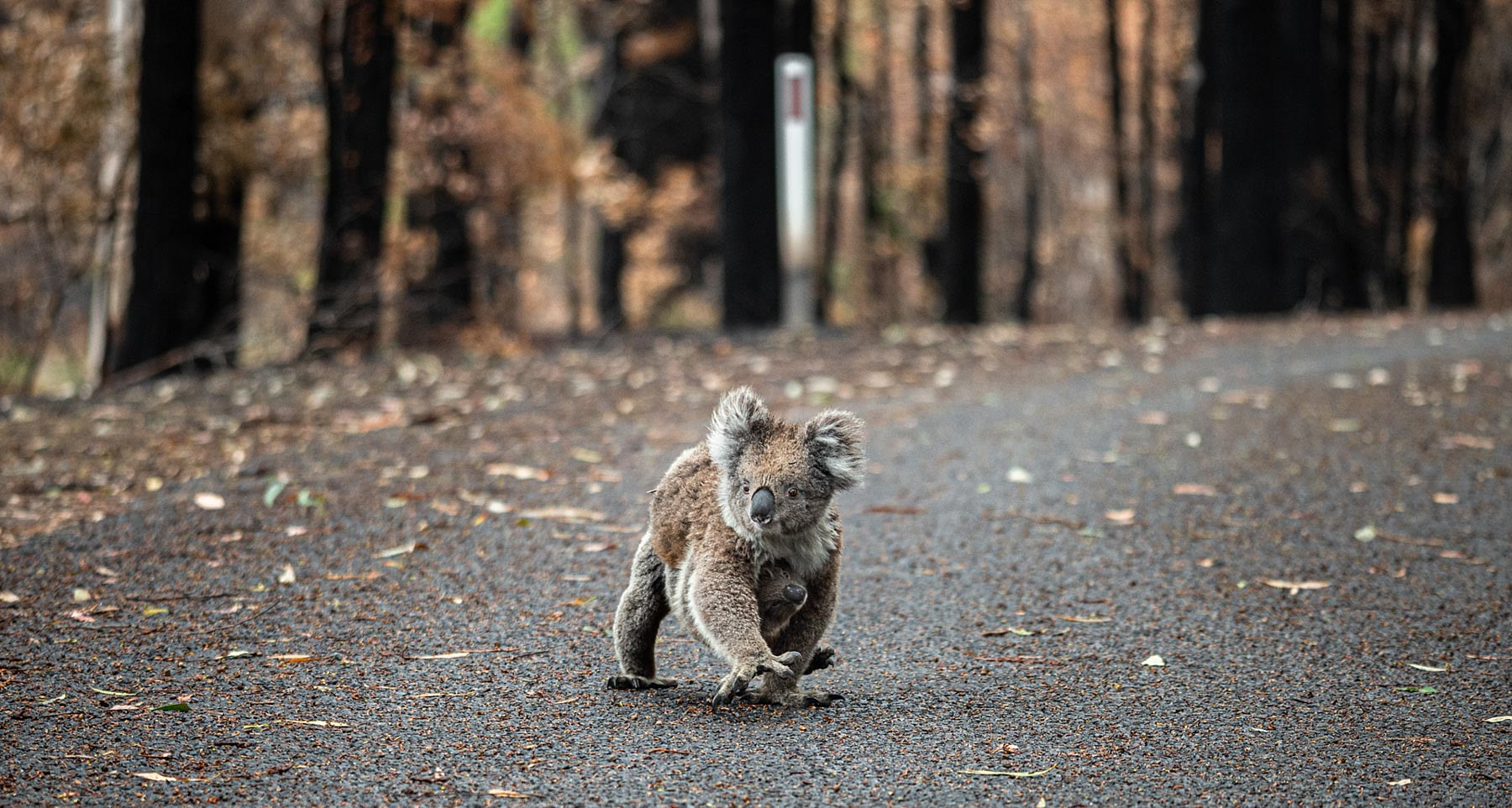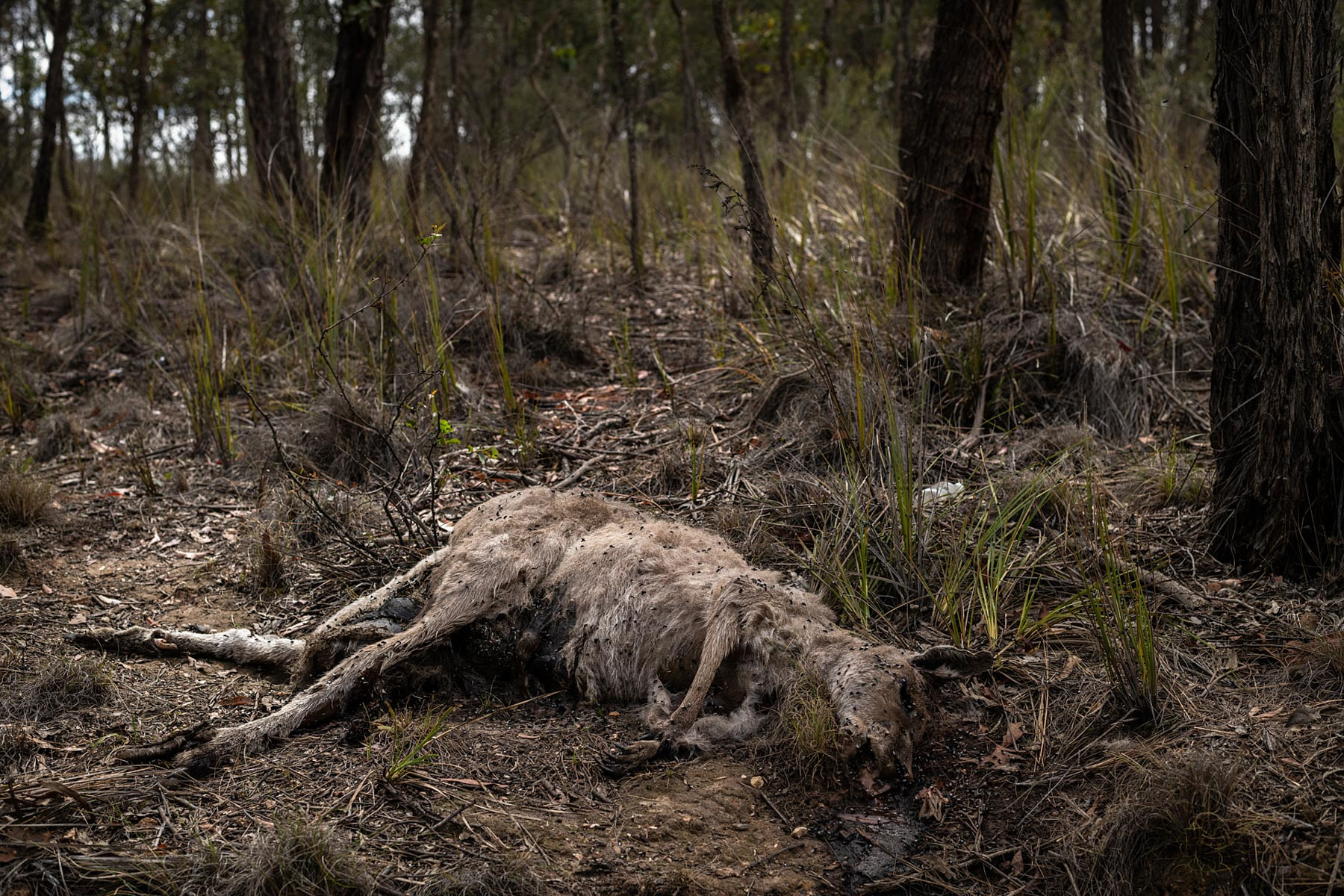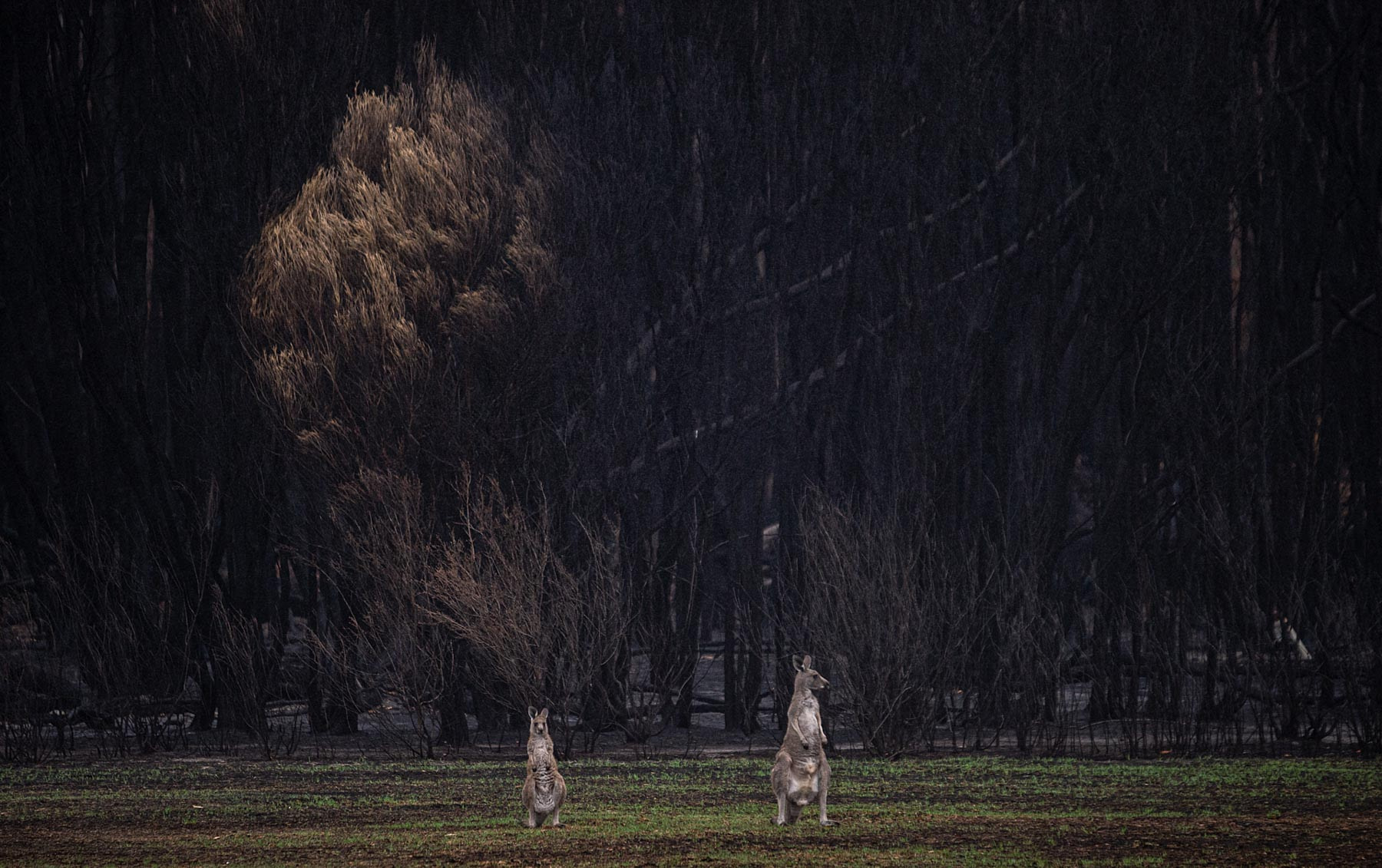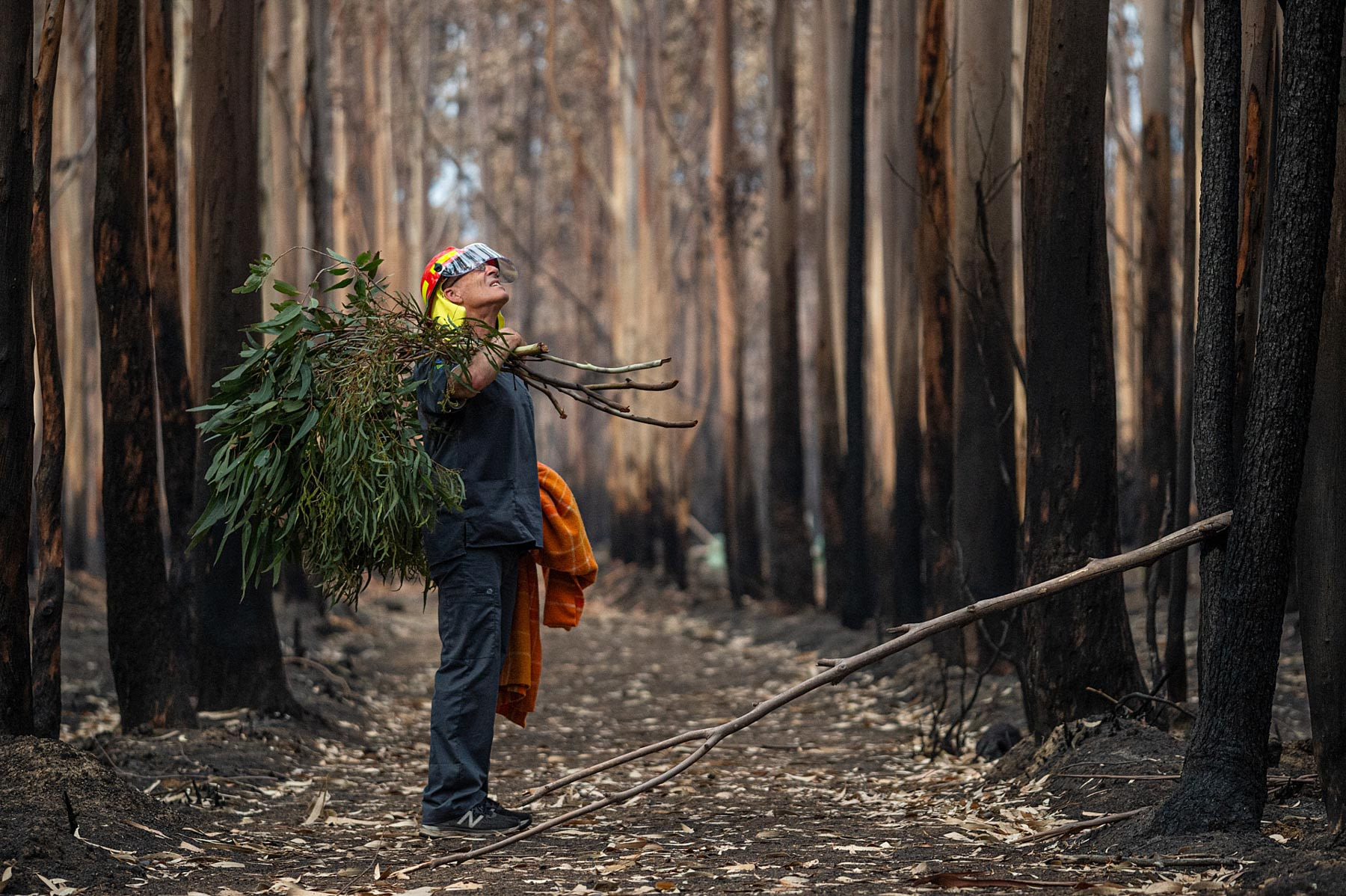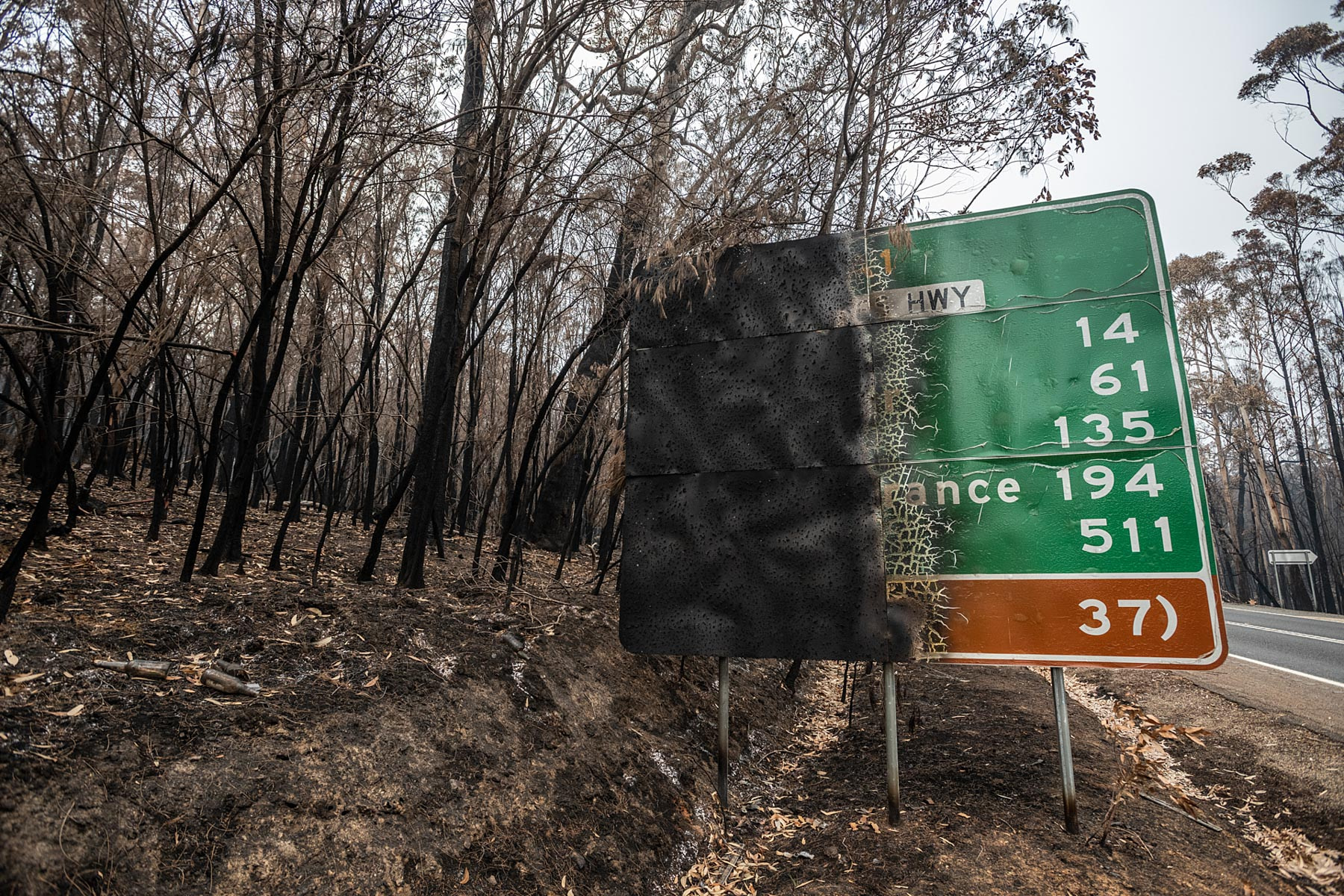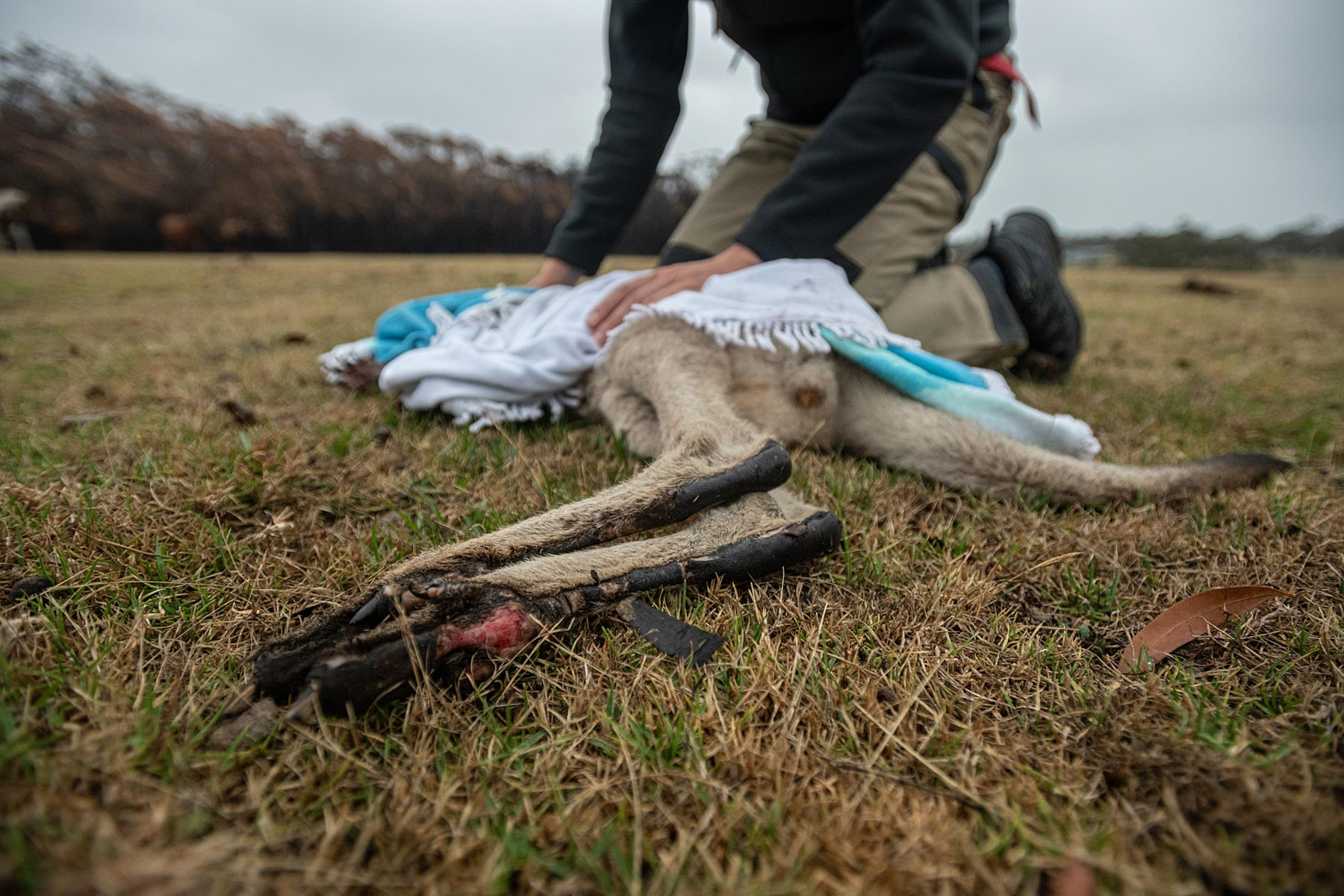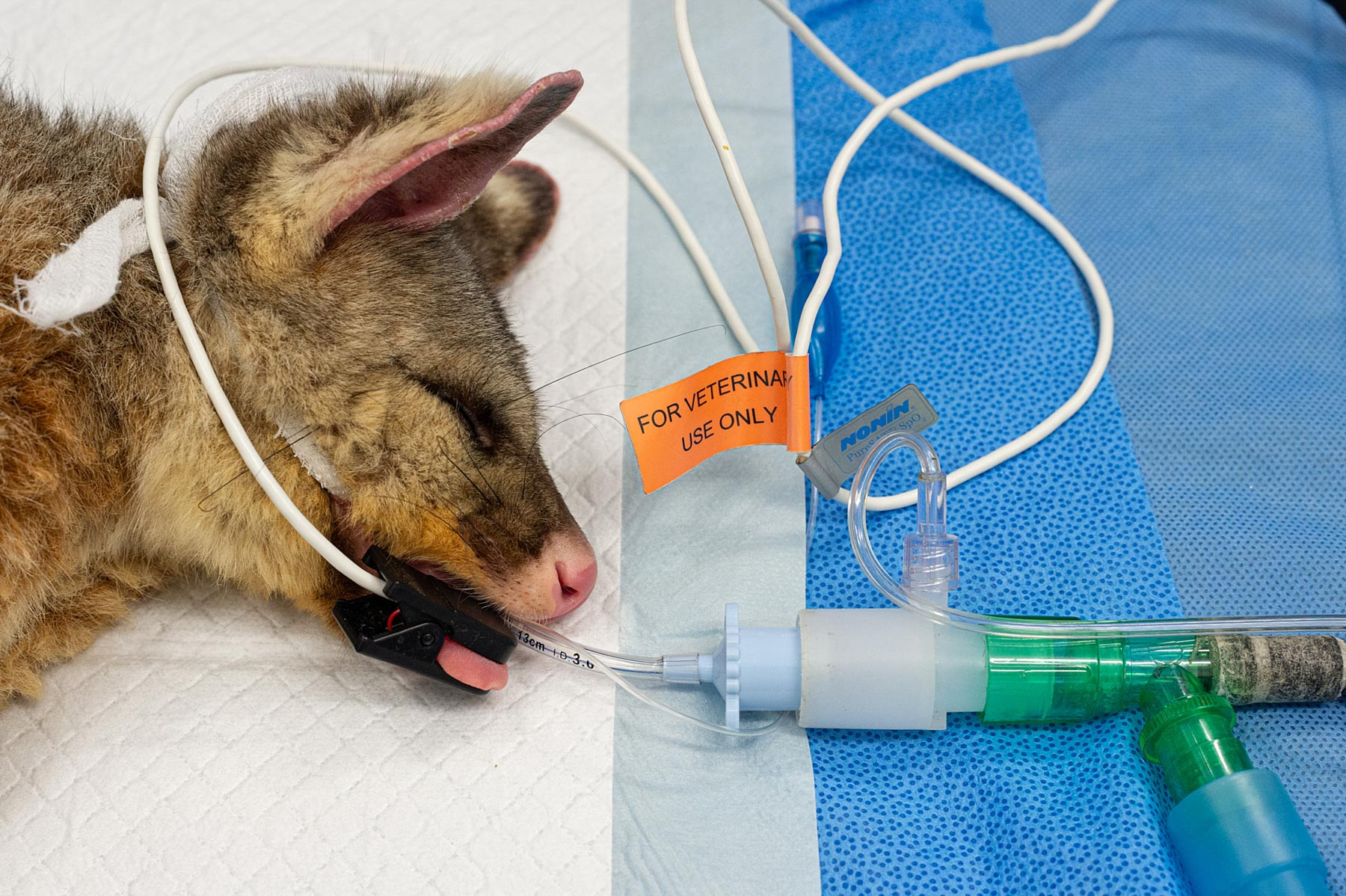An Eastern grey kangaroo and her joey who survived the forest fires in Mallacoota. Mallacoota Area, Australia, 2020.
Jo-Anne McArthur / We Animals
This summer, Australia’s unprecedented bushfires have given rise to seemingly unprecedented goodwill. Money is pouring into organisations rescuing and treating native animals injured and displaced by the fires.
An estimated one billion wild animals have died in these bushfires. There is desperate concern for the country’s koala population, which is estimated to have been reduced by 30%. In one instance, hundreds of bird carcasses washed up on a beach, having been choked by smoke as they tried to escape to sea.
The destroyed forest surrounding Mallacoota. Mallacoota Area, Australia, 2020.
Jo-Anne McArthur / We Animals
Where are all the helpers?
In some places, guerilla vets and wildlife rescuers are conducting unauthorized rescues, finding and transferring animals to government workers and emergency services for evacuation. But these few people can only reach so many.
Veterinarian Chris Barton of Vets for Compassion carries eucalyptus browse into a destroyed eucalyptus tree plantation where surviving koalas perch high in trees. The fresh eucalyptus is tied to the base of trees which lures them down, at which point the rescuers and vets can catch the koala and assess them for injuries. If the animals are kept for rehabilitation, they will later be released to the wild. Mallacoota, Australia, 2020.
Jo-Anne McArthur / We Animals




In one area, young joeys with burned legs, tails and paws are triaged on site. Though their injuries aren’t necessarily fatal, there is no way to treat or to transport them to clinics or sanctuaries through the roadblocks. In some cases, the tough decision to humanely euthanize animals is made.
A ten-month-old koala receives care and treatment at an RSPCA triage site. She lost her mother in the forest fires and her back paws are scorched. She eats browse (leaves) but still breastfeeds so she is being given a milk supplement, and is on pain medications via an IV. Bairnsdale Area, Australia, 2020.
Jo-Anne McArthur / We Animals
There is no shortage of experts or funding, so where are we falling short? The picture is bleak. Donations are distributed to rescue groups, who are for the most part unable to access affected areas. Vets on the ground are lacking proper clinics and supplies to do their work. And with some sanctuaries and local carers at capacity, rescued animals have nowhere to go.





Even after the lessons learned from the Black Saturday bushfires a decade ago, systems simply aren’t in place to do this work. The country is not organized to respond to disasters like this, at least not for animals. Appropriate transport and care on site requires planning, preparedness and inter-agency collaboration. So for as long as generosity and expertise are undermined by structural unpreparedness and politics, we will continue to fail these animals.
Further Reading:
A statement about the 480 million animals killed in NSW bushfires since September The University of Sydney
Govt is working to address threats to native species: Ley ABC News
‘It’s a sorry sight’: Dead birds wash up on Mallacoota’s beaches The Age
Burn Scars: The Long Road to Recovery for Australia’s Wildlife Nature Picture Library
To view more images from this story, please visit our Australia Bushfires gallery on the We Animals Stock Site.



